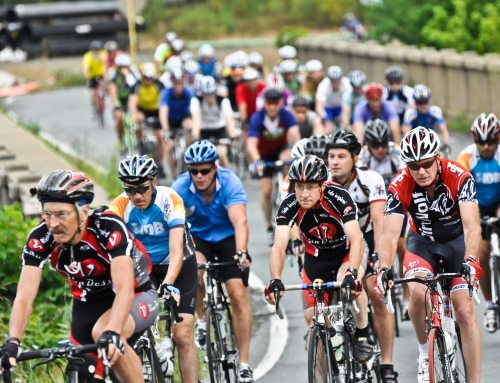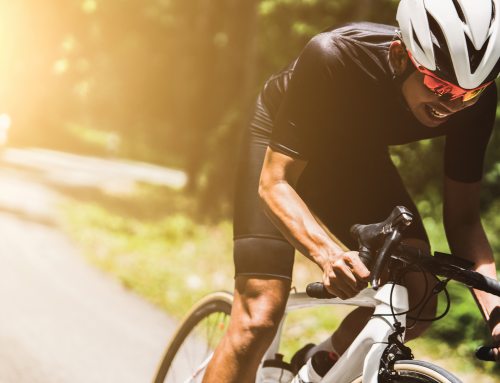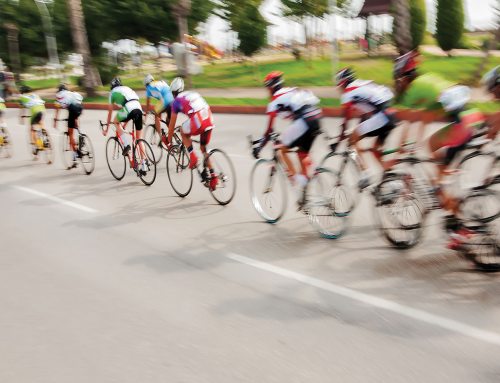By Thomas Henson, Jr.
Riding in charity events allows me to meld two of my favorite activities: helping other people and spending time on my bike. Want to get in on the sweet rewards of the fundraising circuit, too, but just don’t know how to begin or what to expect? Here are answers to some of the most common questions event coordinators hear.
1. How do I find the best event for me?
Look for a cause you feel passionately about. My one “must ride” every year is the American Diabetes Association’s Tour de Cure. I choose to participate in the Tour because I’ve had type one diabetes since I was 9 years old.
But really, there are no bad reasons for choosing to participate. Maybe all your friends are doing the Walk to Defeat ALS and you want to joint them—that’s a fine excuse for helping a charity. I like to think of fundraising events as opportunities to be active and social… with a conscience.
2. How do I sign up?
Most charities have an online process for signing up…and many will also give you the opportunity to join a team. I participate in the Tour de Cure for personal reasons, but I ride as part of the HensonFuerst Cycling Team. We train together, and encourage and support each other. Consider joining an established team for the sheer joy of camaraderie.
3. Do I have to raise money, or can I just join in?
The purpose of the event is to raise funds, so there is usually some minimal amount required. The exact amount varies from event to event, and is posted on the event’s website in the FAQs section. If there are no minimums, you will usually be asked to pay a registration fee.
4. How do I raise money?
If you’re a natural sales person with a long list of friends and family members, asking for donations will be easier than if you are shy. I find that fundraising feels less like begging when I remember the greater purpose—it’s not about me… it’s about the mission and the community. My strategy is to send emails to my contacts with a personal note about why I’m involved, and why I feel it is important to support the cause. I’m not harassing friends for money, but giving them an opportunity to help.
Fundraising begins by answering the question: What is your personal message? Then, choose your favorite way to communicate that message, whether it is in person, by phone, in an email, through social media—whatever works best for you.
Larger organizations offer templates to use when constructing your message and fundraising guides. Some can even sync emails with your contacts list to automatically send out your donation requests. (You’ll be guided to these resources at sign up.)
Teams can provide even more fundraising ideas. Each person has unique talents that can potentially translate into donations. Some groups have held bake sales or garage sales. Some collectors have put valuable items up for sale. The key is to identify what your skills or interests are, and then use them in your fundraising efforts.
5. What happens on Event Day?
Make sure you arrive early—there’s always stuff to do before beginning the event. If you’re part of a team, ask the captain for a general timeframe for arrival. Depending on the size of the event, you’ll need to arrive 30 to 60 minutes before the start time.
Your first stop is at the registration or check-in table. This is where you turn in the donations you collected, and pick up your registration packet. Packet contains everything you need to officially participate, including: a liability waiver (required); bib number, with matching numbers for luggage (for overnight events), bike, and helmet; Q sheet with turn-by-turn map of the event route; FAQs; and usually a tee-shirt, cup, or other commemorative item. Some events give you the option to preregister with early packet pick up, but you can always do it when you show up.
Once you have completed registration, all that’s left is to display your number and meet your team. Captains will usually designate a gathering location beforehand so that the team can start out as a group. Sometimes a team photo is taken.
If you have any questions before or during the event, look for a volunteer, who will probably be wearing an identifying tee-shirt or hat. Everyone is there to make sure your experience is good, and they will help you in any way possible. When directed, line up at the starting line. Then, have fun and Ride Safe!
# # #
Thomas Henson Jr. is an avid cyclist, and finds much happiness in bike rides with his family and friends. He leads the complex injury litigation department of HensonFuerst Attorneys. He can be contacted at ThomasHenson@lawmed.com.






